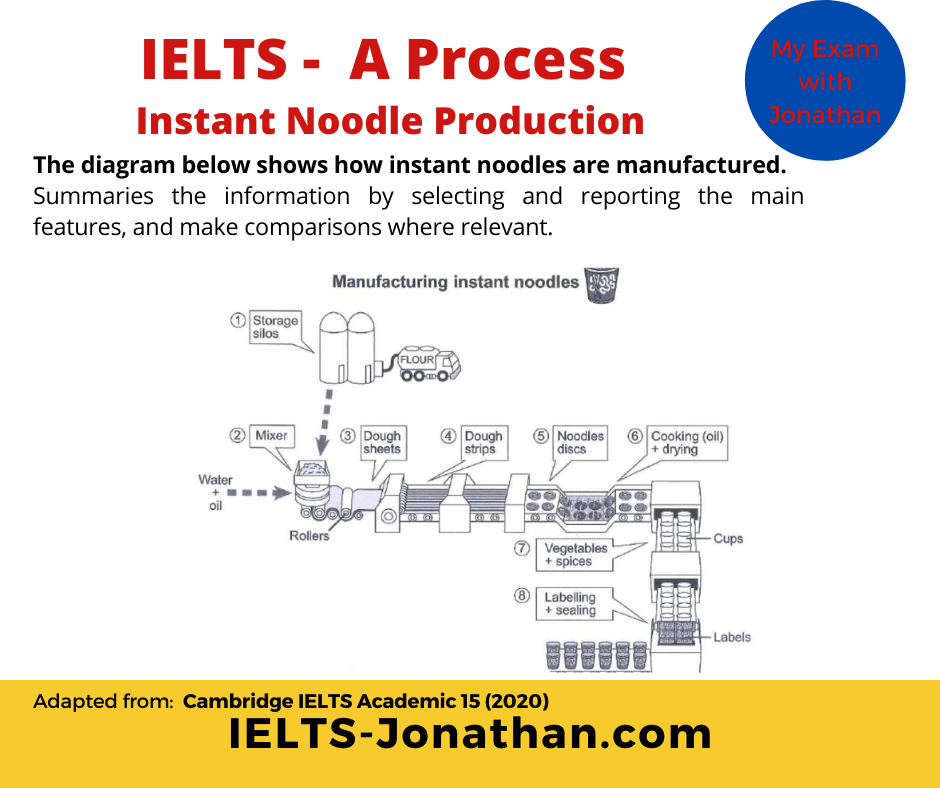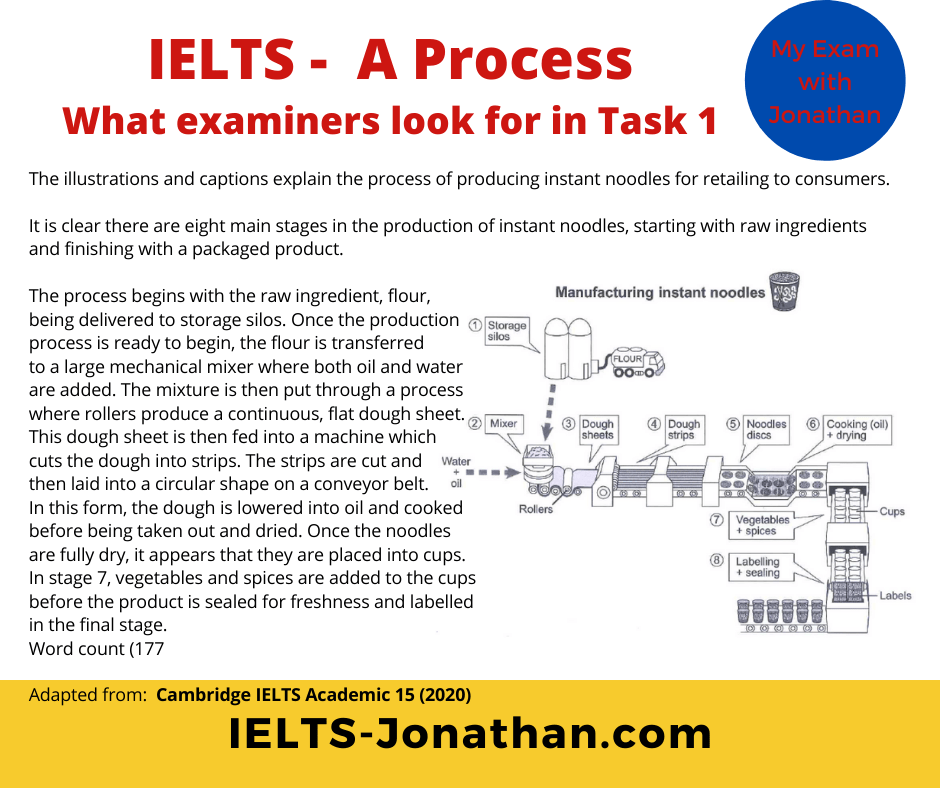Writing an IELTS Task 1 Process Writing Report
When you see an IELTS task for the first time, what’s the first thing you usually do?
Do you panic, do you stare for a long time at the task, or do you start writing something immediately?
If I told you there were two things you should always remember, would that help you?
It probably would, but it’s surprising how easy IELTS students forget.
Remember these small things
For example, if you are planned and prepared, you don’t need to waste valuable time counting each and every word.
You don’t need to waste time correcting every grammar or spelling error either.
To convince the examiner that your writing deserves a high band score, think like an examiner and give them what they want!
What do examiners want in an IELTS Task response?
If you are familiar with the IELTS band descriptors, you’ll know there are four assessment criteria.
These band scales can easily be matched to your writing by the trained examiner.
What an examiner wants to see are clear examples which they can apply to the Band descriptors.
Then the examiner can give a band score.
Easy! 🙂
So, first of all,
Give the examiner what they want to see
Give the examiner an introduction.
Write for the examiner, your own overview.
Write the description of the report and include the main details.
Next,
Make your writing your own
Write clearly, so it is easy to understand.
Write logically, so the examiner can see progression.
Think about the vocabulary and the sentences you use.
Check your work, but accept there may be a few errors.
Instant Noodles IELTS Process Writing
Look at this task and then see how the examiner applies a criterion to assess the writing.
Cambridge IELTS practice Test 15 (2020)
The diagram below shows how instant noodles are manufactured.
Summarise the information by selecting and reporting the main features and make comparisons where relevant.
The illustrations and captions explain the process of producing instant noodles for retailing to consumers.
It is clear there are eight main stages in the production of instant noodles, starting with raw ingredients and finishing with a packaged product.
The process begins with the raw ingredient, flour, being delivered to storage silos. Once the production process is ready to begin, the flour is transferred to a large mechanical mixer where both oil and water are added. The mixture is then put through a process where rollers produce a continuous, flat dough sheet. This dough sheet is then fed into a machine which cuts the dough into strips. The strips are cut and then laid into a circular shape on a conveyor belt. In this form, the dough is lowered into oil and cooked before being taken out and dried. Once the noodles are fully dry, it appears that they are placed into cups. In stage 7, vegetables and spices are added to the cups before the product is sealed for freshness and labelled in the final stage.
Word count (177)
Test Tip
Look at how the trained examiner would assess your writing using band descriptors.
You should try to aim for 150 words, but don’t waste time doing a word count.
Your writing needs to be accurate, but minor factual inaccuracies are not penalised.
Minor grammar and spelling errors are acceptable as they are a feature of the writing process.
Examiner comments
Task Achievement
- The task appears to be around 150 words or more
- The task is introduced with a coherent, paraphrased introduction.
- The task reports the main stages of the process.
- The writer provides an accurate and developed overview of the process.
Coherence and Cohesion
- The task is coherent. The information is logically sequenced and divided into paragraphs.
- The task is cohesive. There is clear progression. Linking words are used effectively and there is cohesion between sentences and ideas.
(the process begins, once the production process is ready, cut and then laid, before being taken. once the noodles are fully dry, in the final stages, this dough, they are placed)
Lexical Resource
- The writer makes use of appropriate academic vocabulary
- explain – show
- there are eight main stages in the production of
- the process begins
- once the production process is
- Repetition of vocabulary is avoided and there are effective examples of synonyms: process begins/production of/ the process of
- There are few or no spelling errors.
Grammatical Range and Accuracy
- There is a variety of sentence patterns which do not detract from the task.
Complex sentences are used
The mixture is then put through a process where rollers produce a continuous, flat dough sheet.
Compound sentences are used:
The strips are cut and then laid into a circular shape on a conveyor belt.
- There are few or no grammatical errors. Errors that exist do not change the meaning
- There are few or no punctuation errors.
Conclusion
If you want to do well in IELTS Task 1 Writing, think like an examiner. Show the examiner the structure of your report, the introduction, the overview and the main report.
You can follow this checklist if it helps,
Work on your weak areas, if you have any, like vocabulary and grammar, to produce what the examiner wants to see and assess.
I’m sure you will be much more successful.
I’m Jonathan
I’ve taught IELTS and University English in more than a dozen universities and schools around the world.
I’m a parent, traveller and passionate about language teaching and helping students achieve their dreams.
Whilst living in Austria or working in Asia, I run IELTS courses to help students get to where they want to be.
If you are serious about IELTS, connect with me to see how I can help you.






Was this helpful? Leave a comment :)